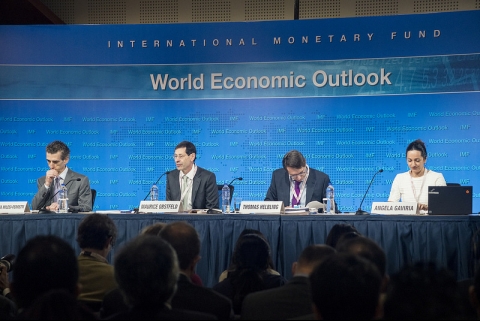IMF puts 2015 growth at 6.5% for Vietnam
IMF puts 2015 growth at 6.5% for Vietnam
The International Monetary Fund (IMF) released its October 2015 World Economic Outlook (WEO) in Lima, Peru, on October 6, which stated that Vietnam’s economic growth will benefit from an oil price windfall.

“Among the ASEAN-5 economies (Indonesia, Malaysia, the Philippines, Thailand, and Vietnam), Malaysia and to a lesser extent Indonesia are expected to slow this year, affected by weaker terms of trade,” the report stated. “Growth, on the other hand, is projected to pick up in Thailand as a result of reduced policy uncertainty, to remain broadly stable at around 6 per cent in the Philippines, and to strengthen to 6.5 per cent in Vietnam, which is benefiting from an oil price windfall,” the report stated.
The IMF also forecast that Vietnam’s inflation rate will decline to 2.2 per cent this year and rise to 3 per cent next year. In the meantime, the country’s current account will grow by 0.7 per cent this year and then be at a 0.9 per cent deficit in 2016.
The IMF forecasts Vietnam’s growth will ease to 6.4 per cent in 2016 but ease to 6.0 per cent by 2020.
Global growth decline
Global growth for 2015 is projected at 3.1 per cent, 0.3 percentage points lower than in 2014 and 0.2 percentage points below forecasts made in the July 2015 WEO Update. “For 2016 we project a rebound to 3.6 per cent growth,” Mr. Maurice Obstfeld, IMF’s Economic Counsellor, told the press conference for the report’s release. “We project that in the near term global growth will remain moderate and uneven, with higher downside risks than were apparent in our July update. The ‘holy grail’ of robust and synchronized global expansion remains elusive,” he said.
According to Mr. Obstfeld, the IMF makes the forecast at a time when the world economy is at the intersection of at least three powerful forces.
First, China’s economic transformation away from export- and investment-led growth and manufacturing in favor of a greater focus on consumption and services. This process, however necessary and healthy in the longer-term, has near-term implications for China’s growth and its relations with its trade partners.
Second, and related, is the fall in commodity prices. Years of high global demand drove prices upward and spurred investment in commodity sectors. But as China began to slow earlier in the decade, many commodity prices turned downwards, starting in the second half of 2011, and their fall has accelerated recently.
Third is the impending normalization of monetary policy in the US. Relatively favorable output and price performance in the US could soon justify an interest rate increase, but the possible global repercussions, especially in emerging and developing economies, add to current uncertainties.



















